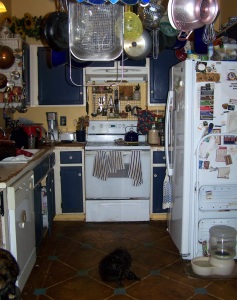Well … a deep subject as the old gag goes. I spent much of my working day yesterday polishing off the next-to-last chapter of Sunset and Steel Rails; just one more chapter, to deal with an emotional climax in the life of the heroine – just as the Galveston Hurricane of 1900 is putting the whole place under water. This has me reading and rereading accounts of the hurricane itself, and teasing out certain details. I sat out a typhoon once, in Misawa in the late 1970s, and one of the things that I remembered most vividly was how very powerful the storm winds were, and how exhausting it was to try and walk against them, even when slacked off to about 75MPH, when we were all permitted to leave quarters. Misawa – about ten miles inland, was maybe a foot above sea level on the main part of the base, so … the authorities paid attention to disastrous possibilities.
Eh – the book will likely top out at about 300 pages, once the editing and the review by the Alpha reader is finished, but I hope to have it done and ready for launch this coming holiday season. This is the book about a proper young Bostonian who comes west as a Harvey Girl, marries Magda Becker’s scapegrace and apparently-confirmed bachelor brother Fredi, and discovers belatedly that a) he is much better husband materiel than previously assumed and b) she is more closely related to the extended Becker-Vining clan than she thought at first. Her motivation for a sudden career change and departure to the Far West is due to the machinations of her sociopathic older brother … but enough of that. Dramatic possibilities galore and just leave it at that.
The rest of the afternoon was given over to printing up flyers on nice expensive heavy paper for this week’s first Book Event of the Season. Likely I have killed much of the printer ink in the color and black cartridges by this exercise … but, the Giddings Word Wrangler event is one that I am thrilled to be a part of, since it was by application and invitation, and it is in association with a library … ah, libraries. When I was a kidlet and a young adult, I practically lived in libraries. Now I also live in a library, but it is an ordinary house with a lot of books stuffed in it. Yes, the last time I moved from overseas, the guys packing the household goods had a bet going, on how many boxes of books there would be. IIRC, it topped out at 63, and that was in 1990, so one can only imagine how many more there are now.
There is also stuff to do with the Tiny Publishing Bidness – other people’s books besides my own. Wrapped up a book for a regular client, have a big meet scheduled to maybe wrap up another one, some potential new client books to spec out … yeah, the days are full. And then there is the semi-regular brush and tree-trimming collection in my neighborhood. Blondie and I spent several days with a pruning saw and dragging branches from small trees out to what is now a substantial pile in front. As it is still eye-bleedingly hot in this part of Texas, this constituted a perfectly exhausting effort on our part.
Finally, our Pullet Surprise; yes, the backyard chickens – still no eggs yet, although the three of them are supposedly closing in on maturity, and ever-more-close-to delivering on the promise of eggs, which is why we started down this line of back-yard farming in May. It seems, alas, that the science of sexing juvenile chickens was not all that advanced at the poultry farm where we purchased the girls. The biggest of the three so-called pullets – which we had previously assumed was just older and more developed – is a rooster. We’ve both gone and compared pictures of mature Barred Rock roosters with our chicken critter … Yep; we can’t escape science. Got spurs developing, longer tail-feathers, impressively dark red crest and magnificent jowls, and a bigger and more impressive set of neck-feathers. Not good in one way – we wanted eggs, dammit, but good in another. The other two girls will be protected against hawks, feral cats and other chicken-slaughtering wildlife, and if we do want to start chicken-raising in a mild way; well, here is the raw materiel. Larry, Maureen and Carly – welcome to our (slightly adjusted) enterprise.
We rather like the chickens, BTW. Maureen is entirely agreeable to being picked up, and having her chin scratched, Carly is not quite so cooperative, and neither is Larry – but he does like having his chin rubbed, too. And that was my week ….







Recent Comments